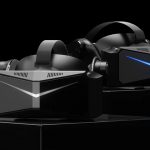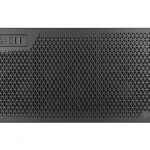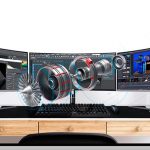As gamers, we often fantasize over the computers we would build given an unlimited budget. We drool over the newest components, knowing we will probably never afford to buy them. Gaming, in general, is not a cheap endeavor. PC gaming often requires a greater initial outlay for gaming hardware than console gaming, but this difference is quickly made up when you consider the prices of the games themselves and the cost of an online gaming subscription (Xbox Live Gold or PlayStation Plus). The difference is even smaller when you consider that you need a computer anyway and you only look at the price difference between the standard computer you were going to buy and the gaming computer you’re considering.
When you’re looking at a budget gaming PC, you’re probably not going to be playing the latest AAA games at the highest graphics quality settings, but with some careful changes to those settings you’ll be able to get a decent frame rate and 1080p resolution.
Processor (CPU)
The processor is arguably the most important part of a PC. The problem is that for every dollar you spend on the CPU, that’s one less dollar you can spend on the graphics card. Both are important for gaming performance. Your choice of Intel vs AMD processor dictates what motherboard you will need to choose. AMD is a common choice for custom budget gaming PCs because it has a good price/performance ratio. Traditional advice says that choosing Intel give you more cores (but lower speed per core) and the ability to upgrade to a more powerful CPU later. However, Intel recently announced the new Skylake microarchitecture for processors. These new processors use a different socket, so you won’t be able to upgrade to them later.
Graphics card (GPU)
The graphics card is what draws the digital scene, and is often a bottleneck in a gaming computer. To learn how to identify performance bottlenecks, see our earlier blog post on the topic. The good news is that graphics cards can be used on any motherboard, Intel or AMD, with the correct PCI slot. Almost all graphics cards use PCI Express 3.0 x16. Prices for graphics cards range from less than $50 to several thousands of dollars for professional graphics cards for workstations designed for 3D design. Again, you’ll have to choose between graphics cards from Nvidia or AMD. Feel free to choose an entry-level graphics card now, and upgrade to a more powerful one later down the road. We recommend choosing a graphics card from the current generation (Nvidia GTX 9xx series or AMD Rx 300 series). Motherboards that support the capability to run multiple graphics cards simultaneously (Nvidia SLI or AMD Crossfire) are more expensive, but allow more room for upgrades.









No comments yet